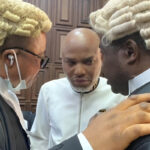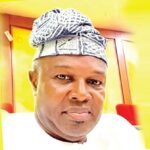The Executive Director, Museum of West African Art (MOWAA), Phillip Ihenacho, has appealed for local investment in the facility, noting that although MOWAA has raised $25 million, mostly from international donors, many global partners pine to see Nigerian ownership.
He stated this during a dinner in Lagos, in honour of MOWAA and the return of the Nigeria Pavilion from the 2024 Venice Biennale.
The dinner, hosted by a member of the Development Board of MOWAA, Ike Chioke, and his wife, Yvonne, served as a celebration and a fundraising rally for the soon-to-be-launched MOWAA campus in Benin City, Edo State.
In his welcome remarks, Chioke, an investment banker and cultural advocate, underscored the urgency of preserving Nigeria’s cultural identity through deliberate investment in its heritage.
“One of the projects my wife and I have supported is the Museum of West African Art,” Chioke began before MOWAA patrons, collectors and cultural enthusiasts.
He continued, “So this evening, we are going to talk about it and speak to people who are interested in the art, who love culture and who understand the heritage and tradition. It is not just a museum in the traditional sense of it, it is more like an institute, which is discussing and teaching Nigerians about themselves and about our heritage. This is coming at a time the world is looking up to Nigeria in terms of developments and everything.”
Reflecting on the institution’s journey since its inception in 2019, Chioke emphasised that “MOWAA has come of age,” with the first of many buildings on its Benin City campus now operational. He highlighted the museum’s strategic location in Benin, a city renowned for its historical bronzes, as a deliberate choice that speaks to MOWAA’s broader vision of anchoring cultural ownership in a space historically connected to African artistic excellence.
“This project is not only about heritage, culture and community, it is also about shaping identity and legacy,” he noted.
According to Chioke, there’s already a Capital Symphony, and with the institute already operational, “We are looking for all the support we can get from art lovers, people who care about Nigeria’s history and culture, people who care about preserving it, to help us in promoting and supporting this institute because it has become a beacon for how we tell our own story and let our contemporaries, adults alike, as well as children, to know where they come from and how that shapes what they are.”
Reinforcing Chioke’s message, Ihenacho explained the museum’s founding ethos as one rooted not only in restitution and remembrance but in revitalisation.
He said, “We did not want to be a memorial for art done hundreds of years ago. The bronze casters that were crafting 600 years ago have descendants who are ready to begin again. This is about looking backward, only so we can look forward.”
Ihenacho pointed out that the museum, through its broad ambition, seeks to support a new generation of creatives beyond visual art to include designers, musicians and filmmakers.
He highlighted how perceptions of the country shifted over the past 20 to 25 years. According to him, mentioning Nigeria used to prompt discussions about negative experiences, but today, people respond with admiration, particularly for Nigeria’s arts and culture such as music, film and fashion.
READ MORE FROM: NIGERIAN TRIBUNE
WATCH TOP VIDEOS FROM NIGERIAN TRIBUNE TV
- Let’s Talk About SELF-AWARENESS
- Is Your Confidence Mistaken for Pride? Let’s talk about it
- Is Etiquette About Perfection…Or Just Not Being Rude?
- Top Psychologist Reveal 3 Signs You’re Struggling With Imposter Syndrome
- Do You Pick Up Work-Related Calls at Midnight or Never? Let’s Talk About Boundaries






